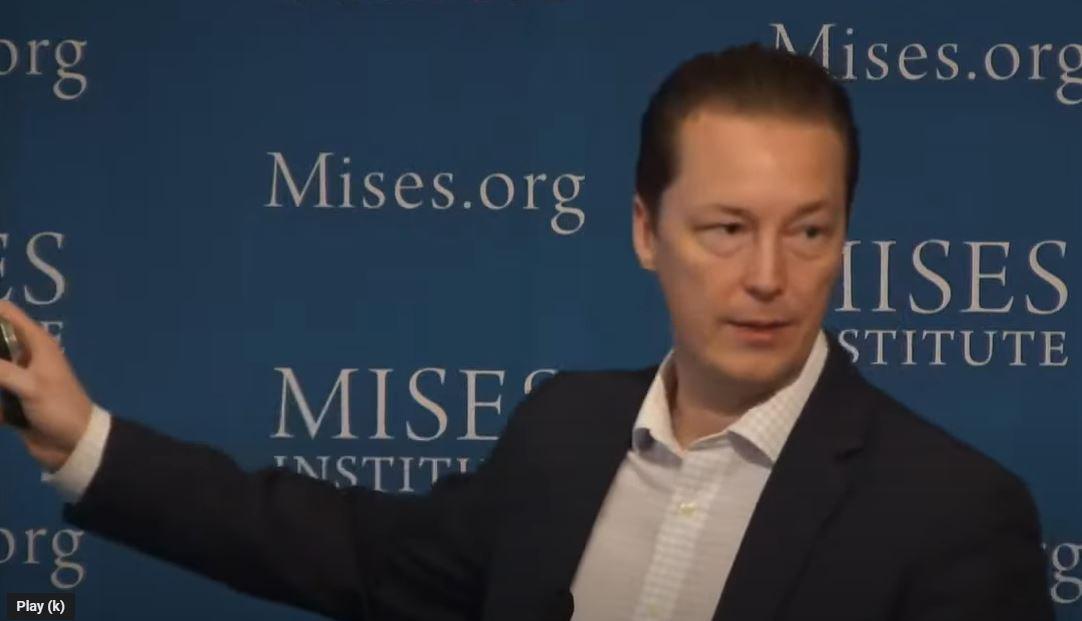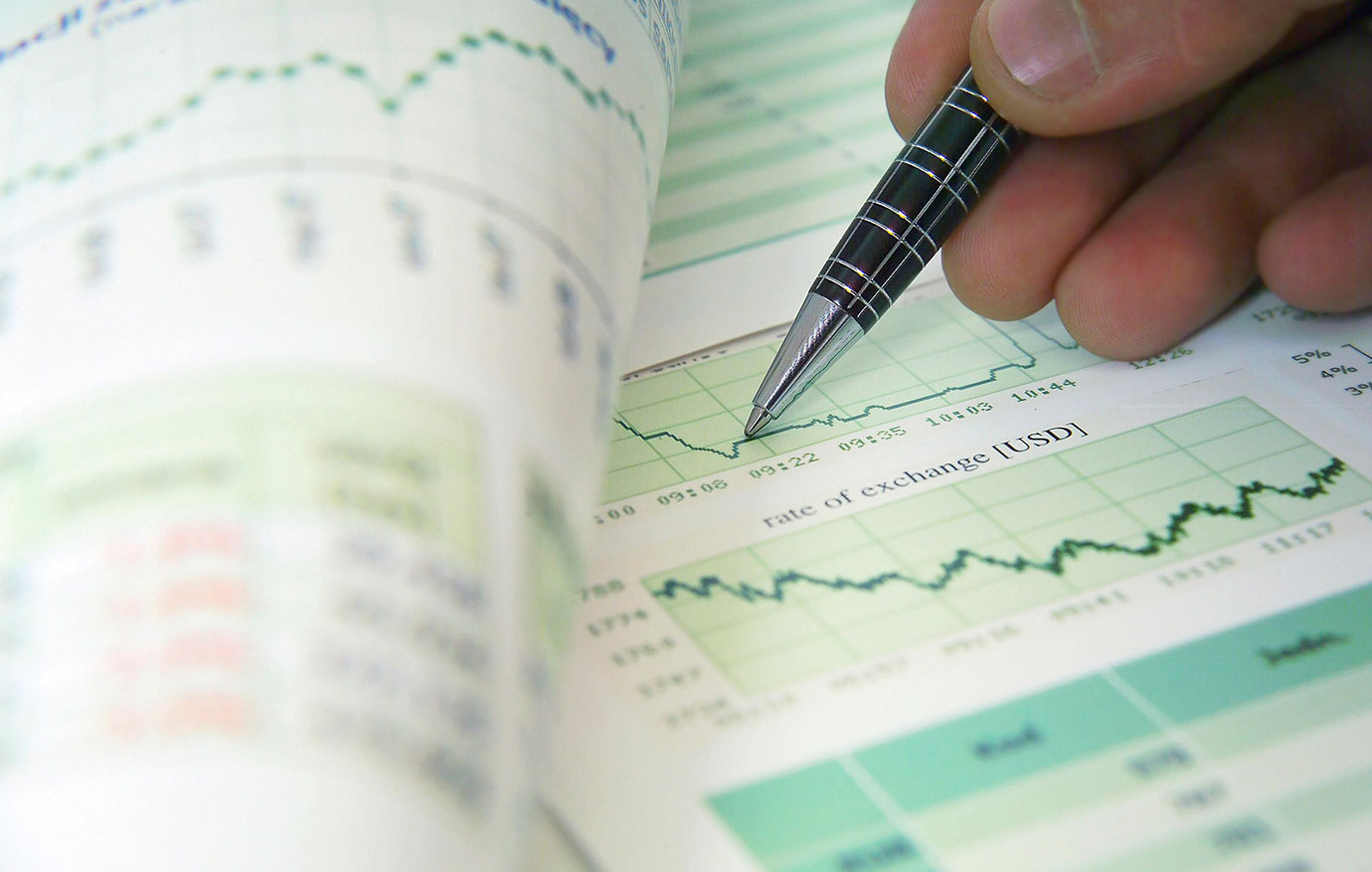
Booms, Busts, and Statistics: What the Mainstream Gets Wrong
Per Bylund’s new book How to Think about the Economy: A Primer is now available online, in the Mises Store, and at Amazon. It’s an excellent beginning text for anyone looking to gain a better grasp of sound economics and to better understand what makes the Austrian school method different (and better). I recently asked Professor Bylund about some of the ways economics has been used and abused to support bad policy.
Ryan McMaken: “Economics” seem to have become a catchall term for technocrats who advise the government on how to use government policy “correctly.” What’s wrong with this view of economics and economists?
Per Bylund: There’s a lot that is wrong with it. A major problem is that it turns the science on its head. Economics was never a tool to use in policy but a scholarly field of study seeking to gain understanding of how the economy works. In fact, it cannot function as a tool for the simple reason that the economy is a process without a purpose and that its “behavior,” so to speak—meaning how it changes, progresses, and unfolds—therefore cannot be predicted in detail. To use an analogy, we can understand dogs and therefore make sense of their behavior, how they react, and get a good idea of what to expect from a dog (and how to treat it!). But we cannot with precision tell exactly what a dog will do and how. It’s by no means a perfect analogy, but contemporary economists pretend that they can predict exactly when, where, and how the “dog” will do what. And they design very blunt tools (policy) to make the animal behave like their models. I don’t want to take this analogy too far, but the economy certainly is better understood as an organism—a super organism, emergent from human actions and interactions—than a machine, which is unfortunately how both policy makers and many economists today think of it.
RM: You have a section of your book titled “How to Do Economics.” This would imply “doing” economics is about more than simply learning some facts. I agree. But why is the method we use for studying economics so important?
PB: The method defines the field. To use the wrong method means the results and findings are wrong, which makes the whole field of study unreliable and irrelevant. Economics is about the social world, specifically where people’s personal wants—what they believe would make their lives better—meet the limitations of the physical world—the ability, through entrepreneurial production, to satisfy those wants. Data on the physical world can be fairly accurately captured in statistics—such as “100 million barrels of oil are produced daily” or “Ford Motor Company produced 6.4 million cars in 2017”—but there is no meaning of this without the value dimension. The value of oil and automobiles cannot be captured in statistics because value is subjective—it is someone’s personal satisfaction experienced through use. It is this valued experience that makes physical production valuable because production is undertaken in order to provide a valuable experience. So statistical method completely misunderstands the reality of the economy. Economics is about how we behave, which comes from our personal valuation, in and relative to the physical world. As it is about human behavior—action—we must use appropriate methods to help us understand human behavior. That method is the step-by-step logical reasoning that we find in praxeology. It’s not the statistical analysis, data mining, and mathematical modeling that economists waste their time on.
RM: Where does real economic growth come from? We’re told growth comes from spending. But isn’t it really in entrepreneurship and saving?
PB: Yes, it is in entrepreneurship and saving. Economic growth is a matter of increasing our ability to lead a better life. Unfortunately, economists—not to mention policymakers—have become all too enamored with GPD, which is a crude measure of the “size” of the economy in terms of statistically estimated well-being represented by produced goods and services. It is patently false to say, for example, that GDP “is” the size of the economy or that an increase in GDP “is” economic growth. GDP merely a measure of it—and not a very good one. And this is where spending comes in: spending can be measured and is an important part of GDP. For example, China’s ghost cities, which have no actual value (that’s why they’re empty—nobody values moving there), were built at great expense. So they increased GDP. But they didn’t increase the general well-being of the Chinese population. The resources used in building those cities could have been put to valued uses elsewhere—anything with a positive value outcome had been better. This shows how a statistical measure can be not only wrong but can mislead a whole field of scholars. Economists have come to believe spending, such as building costly but worthless high-rises, roads, etc., is important for economic growth because it boosts GDP. But this is placing the cart before the horse—nobody is happier because GDP goes up, but because of increased production of goods and services that make our lives better. Real economic growth is about the overall economy’s ability to satisfy people’s real wants—it’s productive ability from a value perspective, which requires successful entrepreneurship to imagine and bring about ever more valuable production.
RM: There is a lot of debate right now whether or not the Fed will “cause” a recession by allowing interest rates to rise. We are told this is bad. In chapter 8, you look at the real cause of recessions, and it looks like the origin of recession comes much earlier in the “boom” phase. So is it really the case that if Powell is responsible for a recession, the fault lies in causing a boom in the first place, not causing a bust?
PB: This is another issue of looking at the wrong thing. Most non-Austrian economists appear to have no conception of how the economy functions but focus solely on when it goes wrong. So they try to figure out what appears to trigger the downturn rather than ask if there is a reason for it. These are the people who proclaimed only days before the financial crisis that the economy was in great shape. Because the statistics pointed in the right direction. But the issue is not statistics but whether production in the economy is aligned with what makes consumers better off. What matters here is not that some value is created but whether production overall is aligned with what all entrepreneurs, in competition with each other, believe consumers will want most. If the very structure of production is misaligned, which means something has misled entrepreneurs as a group away from what would benefit consumers most, then production is not actually as valuable as we are led to believe. Such systemic errors are completely overlooked by non-Austrians, who focus on how the statistics indicate that “more” is produced. But the errors need to be corrected for the economy to realign with what consumers want. Some event, such as the Fed “allowing” interest rates to rise, may trigger the correction, but it’s not the cause of a recession—the cause is the systemic error that neither economists nor policy makers have bothered look for.
RM: So what would be the right government policy for really supporting true economic growth and getting us out of the boom bust cycle?
PB: The market is very antifragile, to borrow a term from Nicholas Nassim Taleb, which is both a blessing and a curse. It’s a blessing because it doesn’t fail even when it is abused. This is why we can lead pretty good lives despite policy makers placing enormous and increasing burdens on market actors. But it is a curse because it seems like many of the policies and regulations are not as harmful and devastating as they actually are. The effects are structural—the economic organism is crippled—but we have no counterfactual and cannot recognize what we’re missing. This is the issue of what I refer to as the “unrealized,” which I discuss in the last chapter of this book (and is the topic of my previous book The Seen, the Unseen, and the Unrealized: How Regulations Affect Our Everyday Lives). So we’ve traveled much farther down the road to serfdom than most proponents of markets would have thought possible. The first step toward recovery is to recognize the errors that have been made—the disease we’ve contracted. We see some of the symptoms—such as devastating business cycles, difficulty to create and find jobs, and slow economic growth—but the actual disease has already progressed beyond the symptoms and is widespread throughout the economic organism. The best “policy” for a healthy economy is to get rid of the disease.


